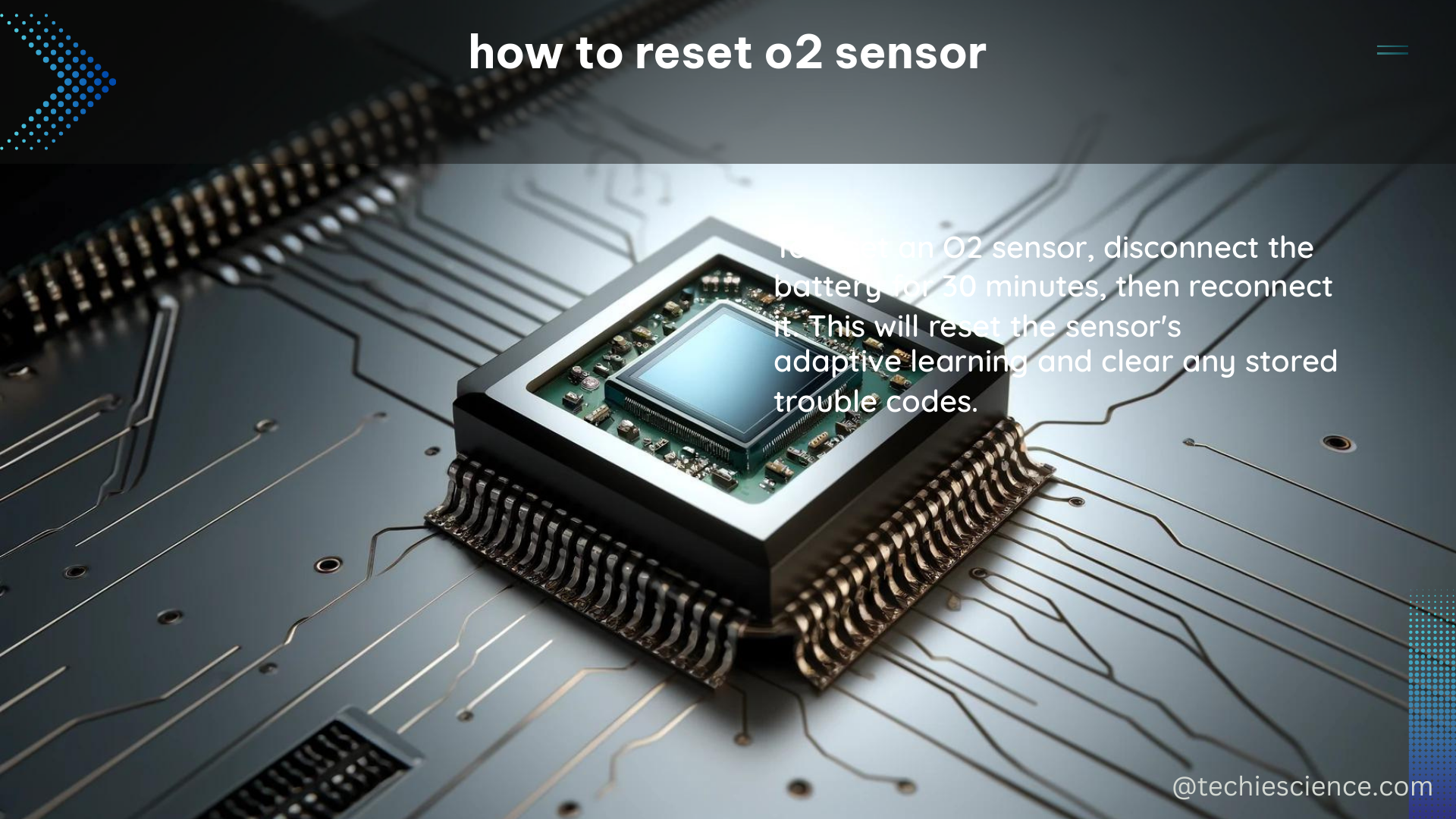Summary
Resetting an O2 sensor is a crucial step in maintaining the efficiency and performance of various systems that rely on accurate oxygen measurements. This comprehensive guide will walk you through the step-by-step process of resetting an O2 sensor, including the technical specifications, power consumption, and temperature compensation considerations. Whether you’re a DIY enthusiast or a professional technician, this guide will provide you with the necessary information to reset your O2 sensor with confidence.
Performing a Master Reset on the O2 Sensor

To reset the O2 sensor, you will need to perform a master reset on the meter. This process can be completed by following these steps:
- Power on the Meter: First, press the power button to activate the LCD display on the O2 sensor.
- Slide Out the Battery: While the meter is still powered on, slide the battery out of the holder. This will cause the LCD display to fade out.
- Wait a Few Seconds: After a few seconds, slide the battery back into the holder.
- Observe the Display: The LCD display will now flash all segments and then show a revision number. This indicates that the master reset has been successfully performed, and the display should return to normal operation.
It’s important to note that performing a master reset will erase all logged measurements from the sensor’s memory. This is an important consideration if you need to retain historical data for your application.
Calibrating the O2 Sensor
In addition to resetting the O2 sensor, it is crucial to ensure that the sensor is properly calibrated. Apogee Instruments, a leading manufacturer of O2 sensors, recommends the following calibration schedule:
- SO-100 Series: Recalibrate every 2-3 years
- SO-200 Series: Recalibrate every year
Failure to properly calibrate the O2 sensor can result in inaccurate readings, which can negatively impact the performance and efficiency of the system.
Technical Specifications of the O2 Sensor
The O2 sensor utilizes a galvanic cell to produce a current flow that is proportional to the oxygen concentration being measured. This current flow is then used to determine the level of oxygen in the system.
To prevent condensation from forming on the permeable membrane, the sensor is equipped with a built-in heater. This is particularly important in environments with high relative humidity, such as soil, where the humidity can reach 100 percent.
In terms of power consumption, the heater requires a 12 V DC input and consumes approximately 74 mW of power, which equates to a current draw of around 6 mA. This power consumption is an important factor to consider when designing the overall energy efficiency of the system.
Temperature Compensation
The ideal gas law demonstrates that the absolute gas concentration decreases by 0.341% for every 1°C increase in temperature from 20°C. For sensors that measure absolute gas concentration but are calibrated to display relative units, a 1°C temperature increase from 20°C can result in an apparent decrease of 0.0714% and a relative oxygen concentration of 20.
To ensure accurate readings, it is essential to apply a temperature correction to compensate for these effects. This can be achieved through software-based compensation algorithms or by incorporating temperature sensors into the system design.
Conclusion
Resetting and calibrating an O2 sensor is a critical task for maintaining the performance and efficiency of various systems that rely on accurate oxygen measurements. By following the step-by-step instructions outlined in this guide, you can confidently reset your O2 sensor and ensure that it is properly calibrated to provide reliable and accurate readings.
Remember to consider the technical specifications, power consumption, and temperature compensation requirements when working with O2 sensors to optimize the overall system performance.
References
- Apogee Instruments – Oxygen Sensor FAQs
- F150 Forum – FORScan: Read O2 Sensor Data
- NEVS Semiconductor – How to Delete O2 Sensors from ECM

The lambdageeks.com Core SME Team is a group of experienced subject matter experts from diverse scientific and technical fields including Physics, Chemistry, Technology,Electronics & Electrical Engineering, Automotive, Mechanical Engineering. Our team collaborates to create high-quality, well-researched articles on a wide range of science and technology topics for the lambdageeks.com website.
All Our Senior SME are having more than 7 Years of experience in the respective fields . They are either Working Industry Professionals or assocaited With different Universities. Refer Our Authors Page to get to know About our Core SMEs.